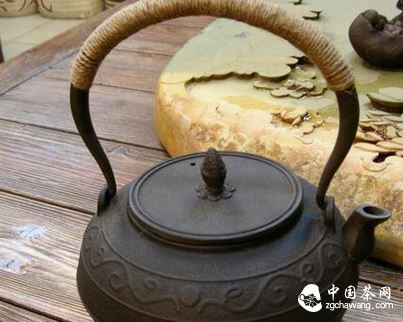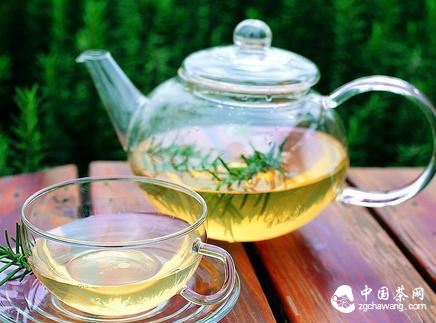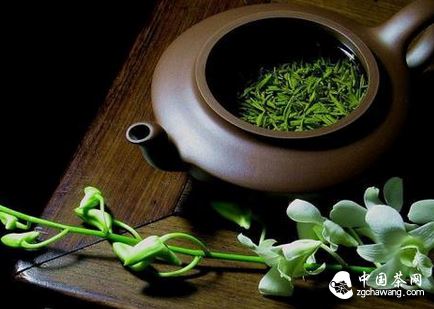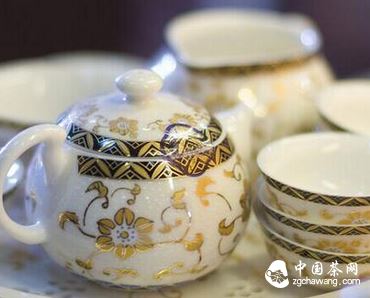A cup of clear tea can quench thirst and provide relaxation. Using different tea sets to brew different types of tea can bring out the flavor and texture of the tea, adding a touch of pleasure to life. The market is no longer dominated solely by purple clay Teapots; traditional materials are regaining popularity, and new styles of tea sets are emerging to cater to new varieties of tea. As summer approaches, which tea set would you choose to be your companion?
Cast Iron Teapot
The culture of iron teapots first became popular in Japan, with origins tracing back to the Edo period, several hundred years ago. The trend resurged around 2012. Cast iron teapots available on the market are not necessarily Japanese-made; many are produced in Taiwan or mainland China. Handcrafted and mold-made teapots vary significantly in price, resulting in a wide range from a few hundred to tens of thousands of yuan.

Most cast iron teapots on the market feature traditional patterns such as small grids, dragon scales, lines, and cherry blossoms, typical of southern Japanese ironware. The coloring is simple and the patterns are delicate and rustic. One reason for their resurgence is the recognition of their Health benefits – during tea brewing, the heat releases easily absorbable ferrous ions, which can help supplement iron intake. Some tea enthusiasts have noted that the iron content makes water softer, enhancing the aroma of the tea. As a result, cast iron teapots are valued both for practical use and for collection.
Maintenance: Regular use is key. Wipe the exterior of the still-warm teapot with a tea towel, and over time it will develop a natural luster.
Tea Pairing: Tea enthusiasts typically do not steep tea leaves directly in the iron teapot but use it to improve the quality of the water before brewing.
Glass Teapot
The popularity of glass teapots is closely linked to the recent craze for herbal teas. Glass does not have pores and does not absorb the flavors of herbal teas, making it convenient for brewing hundreds of combinations of herbal teas. The fully transparent material also allows one to appreciate the unfolding of tea leaves, herbs, and fruits during brewing. Brewing tea is not just about enjoying the final cup but also about observing the transformation of the leaves in the pot, imbuing glass teapots with a strong artistic aura.
There are not many variations in the design of glass teapots, with differences mainly in height, width, and thickness. The quality of the glass determines the price. On the market, there are heat-resistant and non-heat-resistant glass teapots. Non-heat-resistant glass can withstand temperatures ranging from -5 to 70 degrees Celsius, while heat-resistant glass can handle temperatures up to 400-500 degrees Celsius and tolerate temperature changes from -30 to 160 degrees Celsius. Although herbal teas are not typically brewed with boiling water, as a tool for both brewing and heating, salespeople often recommend purchasing lightweight borosilicate glass teapots that can withstand high temperatures. For similarly heat-resistant glass teapots, domestic and imported products can vary in price by about twice, primarily due to differences in weight and design.

Experts caution that there are currently no so-called heat-resistant tempered glass products or tempered heat-resistant glass products on the domestic market. Heat-resistant glass teapots usually carry labels indicating their usage temperature and range. If you find a product labeled as heat-resistant but priced very low, consider its authenticity.
Finding the Perfect Teapot for You
Maintenance: Before using for the first time, wash with vinegar or lemon juice. After brewing tea, rinse with warm water and then place the teapot upside-down on a flat, clean cloth to let the water drain naturally and dry, avoiding water marks. If the teapot is not used for an extended period, avoid storing it mouth-down in a cabinet, as this can trap unclean or stale odors inside.
Tea Pairing: Herbal teas.
Purple Clay Teapot
Purple clay teapots are among the finest ceramic tea sets, gaining fame as early as the Northern Song Dynasty. They are characterized by simple and elegant shapes and a rustic, natural color. Their forms include bamboo knots, lotus roots, pine segments, and imitations of ancient bronze vessels from the Shang and Zhou dynasties. They became particularly popular during the Ming Dynasty.
Since they are fired at temperatures between 1000 and 1200 degrees Celsius, the clay is dense yet porous enough to absorb tea juices. Over time, the color of the purple clay teapot becomes more natural, and the tea inside permeates the pot, infusing it with a tea-like flavor.

Purple clay teapots currently sold on the market mainly come from three regions: Fujian, Yixing, and Taiwan. Fujian purple clay uses Yixing sand, processed in Fujian. Taiwanese purple clay teapots have finer grains than those from other regions and are better suited for brewing Oolong Tea. Prices range from a few hundred to several thousand yuan.
Maintenance: Although purple clay is susceptible to oil, dirt, and damage, if a purple clay teapot is unused, its color will be significantly affected, hindering its appreciation and value retention. In the circle of experts, it is said that “the life of purple clay lies in tea; without tea, purple clay loses its luster,” emphasizing that maintaining a teapot is the proper way to collect and appreciate purple clay.
Tea Pairing: It is generally believed that brewing Taiwanese Oolong tea and Tie Guan Yin (a type of semi-fermented tea) best showcases the unique flavors of the tea.
Ceramic Tea Set
Ceramics do not absorb water and produce a clear and resonant sound. White ceramics are highly prized, and they are fired at approximately 1300 degrees Celsius. They reflect the color of the tea and have moderate thermal conductivity and insulation properties. They do not react chemically with the tea, making them ideal for brewing to achieve a good balance of color, aroma, and taste. Moreover, they are aesthetically pleasing and suitable for brewing lightly fermented teas with a strong focus on aroma, such as Wenshan Baozhong tea.

The most common types of ceramic tea sets are white porcelain and blue porcelain. Ceramic tea sets offer more decorative patterns than purple clay teapots. Their designs can be fresh and graceful or light and soothing. Additionally, due to advances in ceramic technology and materials, the variety of home decor items made from ceramic tea sets has expanded. Some newer ceramic tea sets feature various patterns to appeal to younger consumers.
White porcelain from Jingdezhen is renowned, while blue porcelain teapots are mainly produced in Zhejiang and Sichuan, with those from Longquan County in southwestern Zhejiang being particularly famous for their ancient and robust shapes and jade-like emerald green glaze. There are also black porcelain teapots produced in Sichuan, Zhejiang, and other areas, as well as antique-style teapots from Guangdong, each with its own unique characteristics.
Maintenance: A newly purchased teapot can be prepared by brewing tea or boiling it to remove any earthy taste. After a period, it can be used for brewing tea. After brewing, the residue should be removed promptly and cleaned thoroughly to prevent the tea from turning sour, leaving a lingering unpleasant smell and forming tea scale.